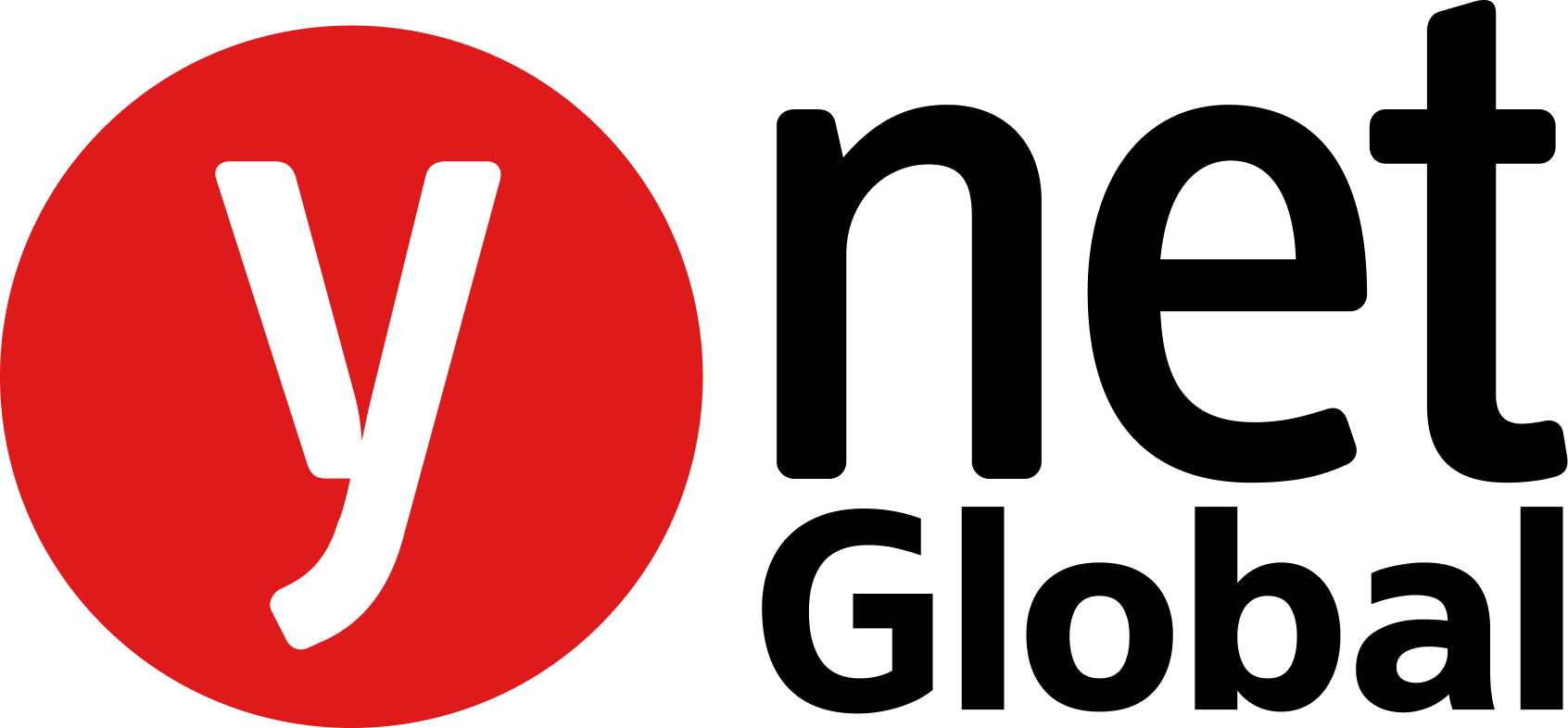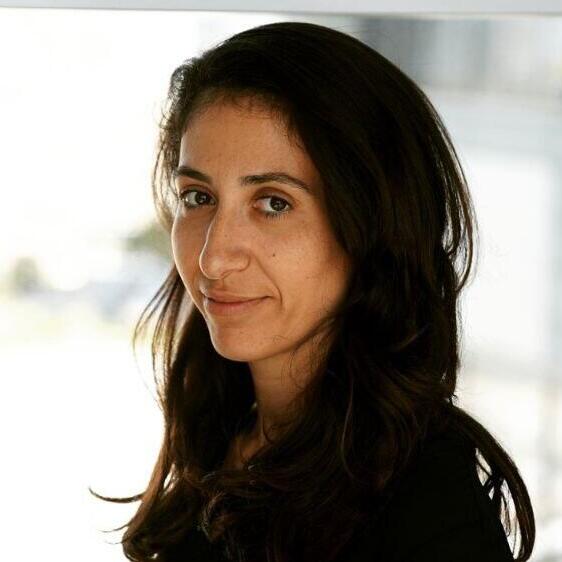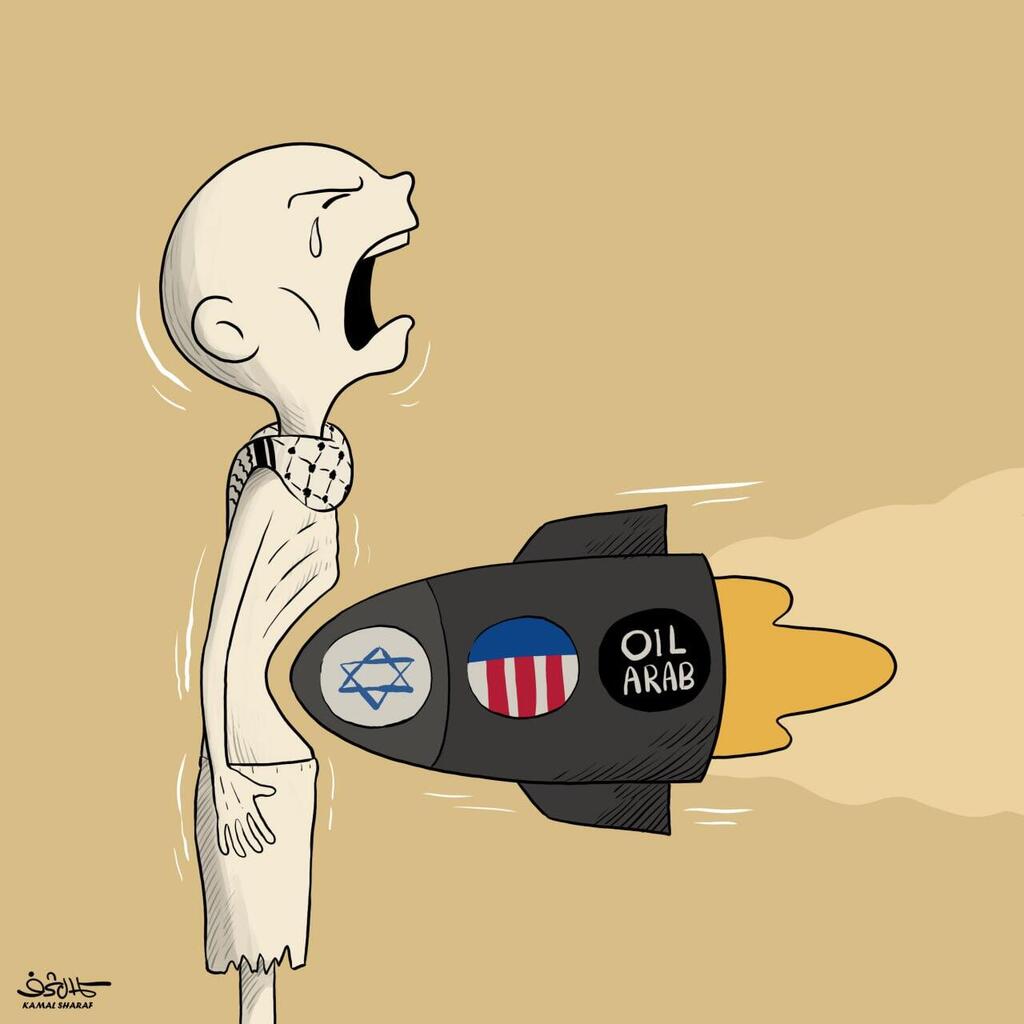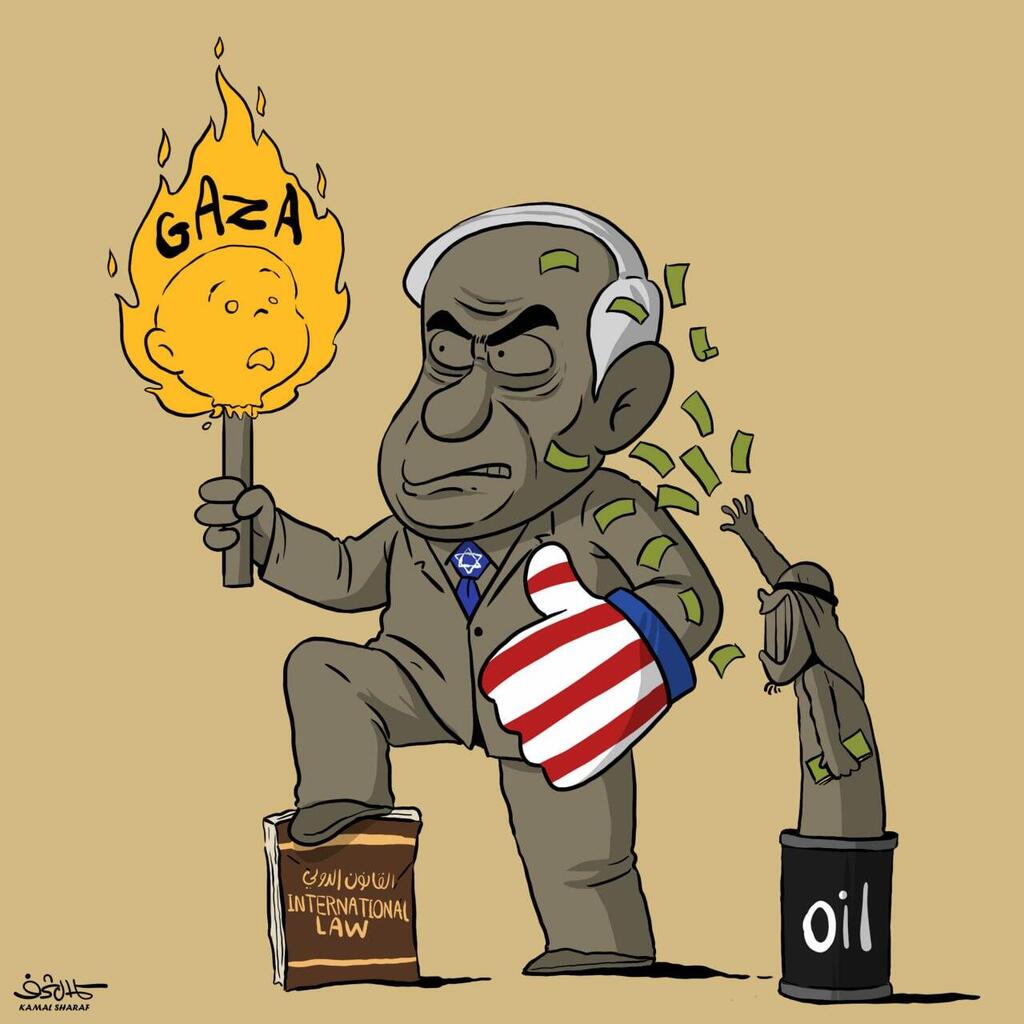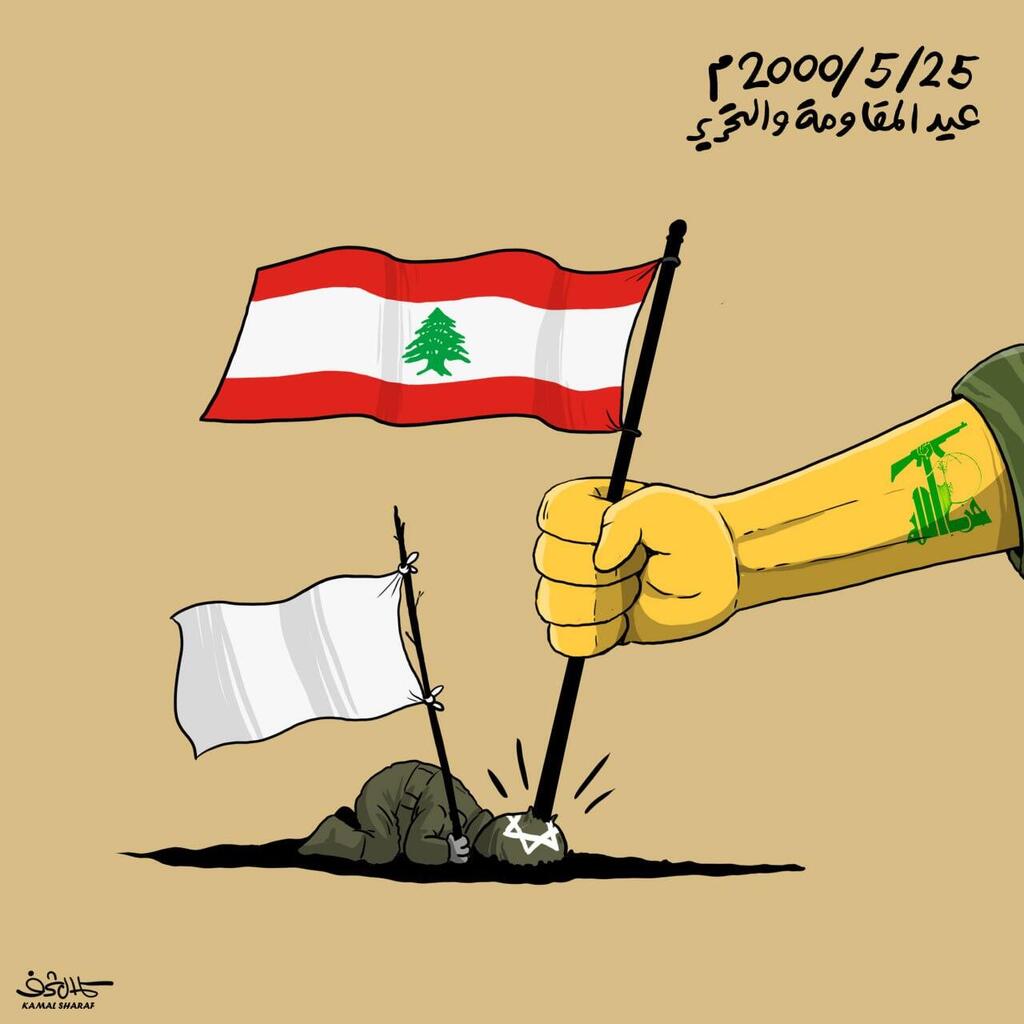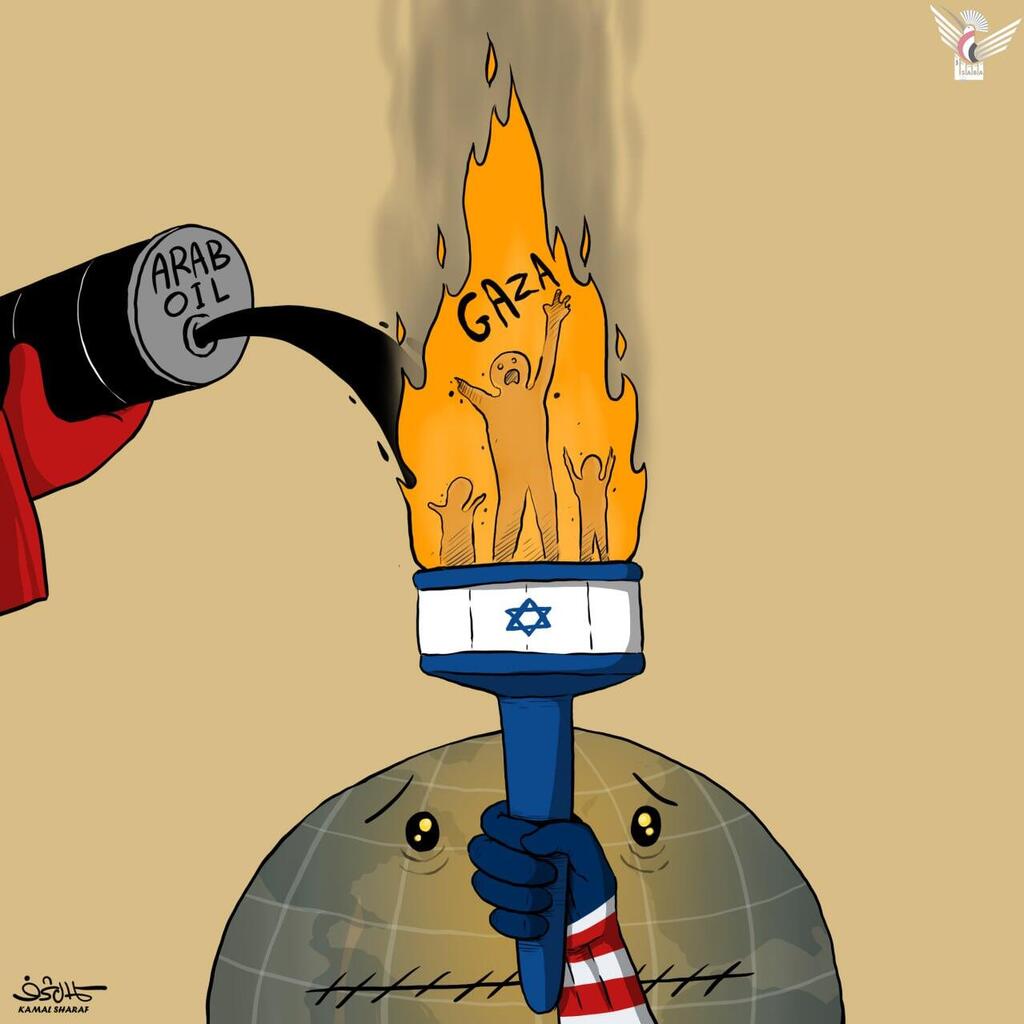The cartoons of Kamal Sharaf have been echoed by supporters of the Iranian-Shiite axis throughout the past months of war, with relentless frequency. The Yemeni artist spares no event or political development to deliver his incendiary and provocative messages—and not only against Israel, the United States and the West, but also against Gulf leaders, particularly in light of their strengthening ties with Washington during recent visit of President Donald Trump, and against other rulers such as Palestinian Authority President Mahmoud Abbas and Egyptian President Abdel Fattah el-Sisi. His illustrations also target media outlets like Saudi Arabia’s Al Arabiya and Al Hadath.
In Sharaf’s works, recurring motifs can be identified. Representing the Houthis, Iran’s proxy in Yemen, he frequently incorporates the "janbiya," the traditional Yemeni dagger, into his cartoons. Additionally, he emphasizes the colors of the flags of the countries featured in his cartoons, often leaving the background clean, making them easy to recognize. Drawings of missiles and drones in various forms are also characteristic of his illustrations.
Sharaf receives widespread praise from Iran, the leader of the Shiite axis, where he is treated with the respect of a local cartoonist. In April, the Iranian Al Alam channel reported that Sharaf had won the "International Face of Resistance Art" award (referring to the axis fighting Israel), in recognition of his works, which were described as "inspirational." The report claimed that since the beginning of the war between Israel and Hamas, Sharaf had completed around 500 works and had become a prominent artistic voice of the resistance in Yemen. The award was received on his behalf by Yemen's ambassador to Iran, Ibrahim Mohammed al-Duilami.
Sharaf’s works, published on his Instagram, Telegram and X accounts, have also appeared in exhibitions and fairs, including in the Tehran metro. In a video posted on his Instagram account, he was even documented drawing a cartoon in the Imam Reza Mosque in the city of Mashhad, Iran, specifically in the part of the mosque known as the "Al-Quds Courtyard," where a replica of the Al-Aqsa Mosque is displayed.
The cartoon he drew in Mashhad’s courtyard is very similar to another one of his works that received significant recognition in Iran: on April 29, Sharaf announced on his X account that a cartoon he created featuring the downing of an American F-18 fighter jet from the aircraft carrier USS Harry Truman had been displayed in Palestine Square in Tehran. This square is used by Iran to convey messages and threats against Israel and the West.
In one of Sharaf’s cartoons, a thin Gazan child opens a pot, only to have a hand representing the United States and Israel emerge and strangle him. Another illustration shows Netanyahu burning Gaza’s children while trampling international law, with the backing of Washington and Arab money derived from oil.
A feature on Sharaf published in November in the Lebanese newspaper Al-Akhbar, which is associated with Hezbollah, stated: "Sharaf manages to express the popular voice. After every significant event, he publishes an illustration related to it on his social media accounts, and platform users rush to share it. Many of them might not care about the artist’s signature, and perhaps they don’t even know his name, but everyone recognizes his drawings and understands that they are the work of one artist."
The article also noted that, beyond his cartoons, Sharaf works as an animation director and illustrator of children’s stories.
In January 2024, the Houthi-affiliated Al-Masirah channel reported that the "Supreme Committee for Supporting Jerusalem" in Yemen had presented Kamal Sharaf with a symbolic gift in recognition of his cartoons and artistic creations "expressing the suffering of the Palestinian people and their just cause."
One of Sharaf’s notable works commemorates 25 years since the IDF's withdrawal from southern Lebanon, depicting Hezbollah’s hand planting the Lebanese flag into the helmet of an Israeli soldier, who appears to wave a white flag.
In a recent interview with the Lebanese news platform Iftaradia (Virtual), Sharaf made surprising statements: "Mr. Hassan (Nasrallah, slain Hezbollah Secretary-General) saved me during the Second Lebanon War." He explained that he drew inspiration from Nasrallah’s strength, which helped him hold onto his religious principles. In the same interview, he added: "The enemy constantly talks about us collectively—about Lebanon, Yemen, Iraq and Iran—and always sees us as one enemy. Therefore, we need to act as if we are one country, especially the resistance axis, and of course, all of us as Muslims."
During that interview, Sharaf claimed: "Without the resistance, Lebanon would not exist," and stated that "the resistance is the secret of Lebanon’s strength." He also criticized the Lebanese MTV channel, known for its opposition to Hezbollah, describing it as "an intelligence eye of the enemy." Such accusations against MTV are commonly found in Al-Akhbar, suggesting that Sharaf has thoroughly absorbed the messaging of Iran’s proxies in Lebanon.
Get the Ynetnews app on your smartphone: Google Play: https://bit.ly/4eJ37pE | Apple App Store: https://bit.ly/3ZL7iNv
Sharaf’s X account has over 189,000 followers, and his Telegram account has more than 8,700 followers, while his Instagram account has over 8,800 followers. The size of his audience is particularly concerning, as it allows him to spread his antisemitic content across Arab and Islamic countries.
In an interview with the Iranian Al Alam channel in January, Sharaf stated: "Cartoons must be bold and authentic, expressing the naked truth without ambiguity," emphasizing that his goal is to expose anything "fake," whether religious, political or intellectual.
"I strive for my cartoons to always be wordless, in every language. The drawing itself should be the language. That’s why many of my illustrations have spread across different societies online—everyone understands them. Drawing is a universal language," he said.

